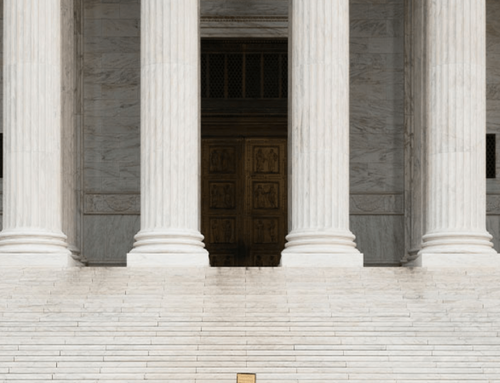New IRS guidelines and the CARES Act
Here’s what you need to know about the new IRS guidelines based on the impacts of COVID-19 and who is considered a qualified individual.
We’ve all been impacted by COVID-19 in one way or another, and for some people, the hit has been harder. It may be in your best interest to take up to $100,000 out of your retirement accounts, and right now, qualified individuals can do this and repay without penalties. The IRS recently updated guidelines (Notice 2020-50) on who is considered eligible to take advantage of this benefit. First, we’ll review of the rules set forth by the CARES Act, and then talk about the expanded eligibility.
The CARES Act and retirement
If you take a coronavirus-related distribution from your qualified retirement plan, Section 403(b) plan, or IRA, you can receive two tax benefits:
- You can withdraw and keep the money, and if you do this, you are not subject to the 10 percent early withdrawal penalty that would normally apply to anyone under 59 1/2 years old. You can also spread the income equally over three tax years – 2020, 2021, and 2022. The entire distribution can also be included solely in tax year 2020 income.
- If you withdraw and repay the money within three years of the distribution date, you don’t pay taxes or penalties on the money.
The CARES Act defined qualified individuals if they matched at least one of the following:
- The individual or their spouse was diagnosed with COVID-19 using a test approved by the CDC
- The individual experienced adverse financial consequences due to quarantine – they were laid off, furloughed, or had reduced hours at work as a result of COVID-19
- The individual experienced adverse financial consequences due to a combination of not being able to secure childcare, and therefore, not being able to work
- The individual experienced adverse financial consequences due to needing to close or reduce business hours because of COVID-19
Under the CARES Act, it was ruled you could take out up to $100,000 per person and make the distribution any time starting from January 1, 2020 to before December 31, 2020.
What the IRS’ Expanded Relief Includes
With recent expansions given by the IRS, you are also considered qualified for coronavirus-related distributions if you’re experiencing financial hardship due to:
- A reduction in pay or self–employment income for you, your spouse, or someone in your household from COVID-19
- A rescinded job offer or start date for you, your spouse, or someone in your household
- Qualifications for individuals got extended to spouses and other household members:
- If any of these people were furloughed, laid off, or had reduced hours due to COVID-19
- If any of these people were unable to work due to lack of childcare as a result of COVID-19
- If any of these people own or operate a business that has had closed or reduced hours because of COVID-19
For members of the household, you can include anyone who shares your principal residence. This means roommates who share a primary residence could also qualify under this extension.
Options for Repayment
Depending on how you’d like to approach it, you have several repayment options, using borrowing $30,000 as an example.
- If you borrowed $30,000, for example, and repaid before timely filing your 2020 tax return, you wouldn’t include any of the $30,000 on your 2020 tax return in income and would pay no taxes or penalties.
- If you included $30,000 as income on your timely filed tax return, you could repay the amount between filing the 2020 return and July 15, 2023. You could then amend the $30,000 on your 2020 tax return from income and claim a refund on the tax paid on the amount.
- You could also include $10,000 as income on your timely filed 2020 tax return while withdrawing $30,000 and repay the full $30,000 between filing your 2020 tax return and July 15, 2023. Then $10,000 would be claimed as income on your original 2020 tax return and you can later amend that return to remove the $10,000 from income and claim a refund of tax paid on that amount.
- If you included $10,000 as income on your 2020 tax return, but then decided to repay $10,000 of your total $30,000 distribution on March 1, 2022, you can claim $10,000 of income on your 2020 tax return, no income on your 2021 tax return (because the repayment came prior to filing), and you would claim the $10,000 of income on your 2022 tax return.
- If you included $10,000 as income on your 2020 tax return, and then decided to repay $20,000 of the total $30,000 you took out on November 1, 2021, you could either claim no income from the distribution on either your 2021 or 2022 tax return, or you could claim $10,000 in income on your 2022 tax return and amend your 2020 tax return to remove the $10,000 from your income and claim a refund of the tax paid on that amount.
These scenarios are meant to illustrate the options you have available in borrowing and giving back. If you have questions, please reach out to a member of your Chortek tax team today.




